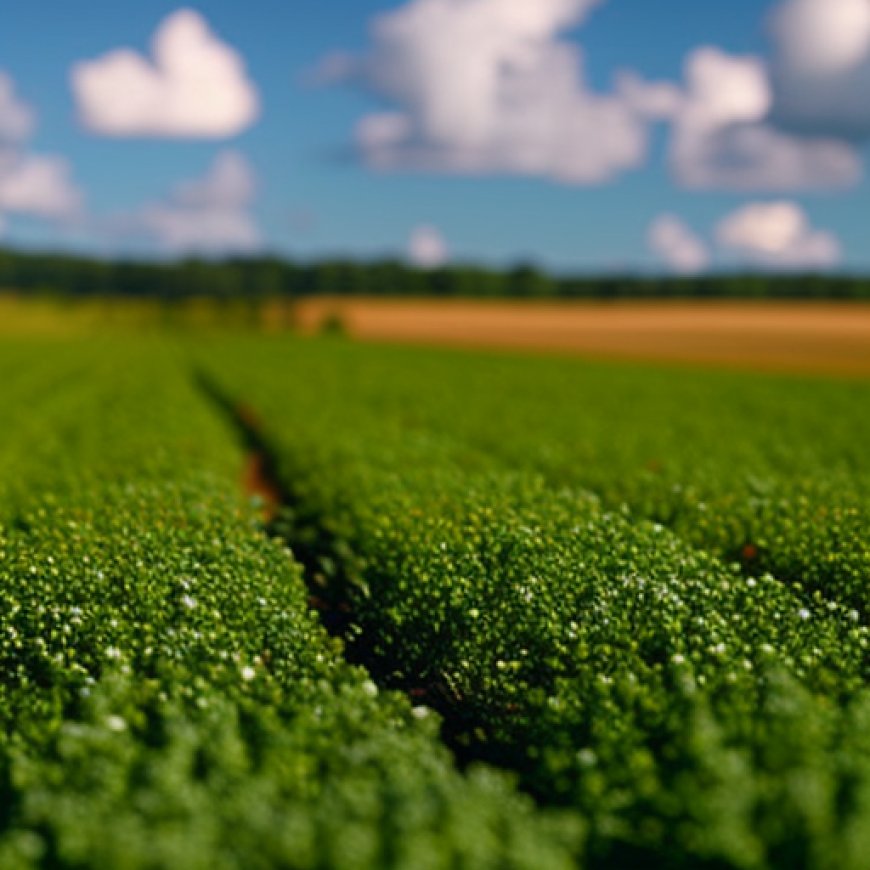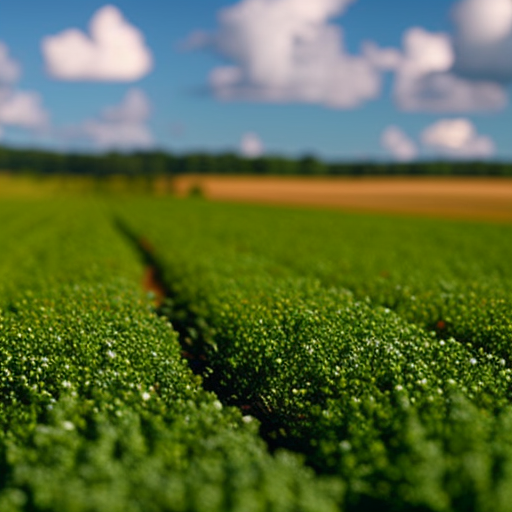Pasture risk management decisions for dry weather – Ohio Ag Net | Ohio’s Country Journal
Pasture risk management decisions for dry weather – Ohio Ag Net Ohio's Country Journal and Ohio Ag Net


Managing Grazing Systems for Sustainable Development
By Clifton Martin, Ohio State University Extension Educator ANR, Muskingum County

We passed through a May and June that looked more like a July and August if we consider rainfall. Usually, July and August are more likely to put managers under pressure with hot temperatures and limited precipitation that force choices that might often be classified as “which wrong choice is the most right?” as we work to make the best of less-than-ideal conditions.
Timely rainfall is easing the current drought pressure that had been developing locally, but we still have a way to go for summer heat. As we navigate these choices, here are some points to remember.
Sustainable Development Goals (SDGs)
- Goal 2: Zero Hunger
- Goal 13: Climate Action
- Goal 15: Life on Land
Principles for Managing Grazing Systems
- Take half: When we follow take half/leave half, we are grazing so that we always leave residual leaf cover in the pasture which allows continual photosynthesis and energy capture and provides shading of the soil to cool and support our cool season grasses.
- Rest period: The rest period is very important in July and August because cool season grasses grow very slow in typical conditions in our region. Thirty to 60 days is common in a typical summer, but it all depends on temperature and precipitation.
- Rule of thirds: The risk we incur by cutting grass too short is early decline of pasture, increased weed pressure, perhaps too much ash in hay, decreasing soil moisture, and decreasing soil productivity.
- Accumulation and buildup: Another discussion that we see when we are faced with prolonged dry weather is nitrate accumulation and prussic acid buildup.
Take Half
When we follow take half/leave half, we are grazing so that we always leave residual leaf cover in the pasture which allows continual photosynthesis and energy capture and provides shading of the soil to cool and support our cool season grasses.
Think about grass leaves as solar panels which always need surface area to harvest sunlight and continue working. Specifically, it is recommended to avoid going below four inches in grazing height with tall fescue and orchard grass. You can also find other species-specific guidelines if needed.
Rest Period
The rest period is very important in July and August because cool season grasses grow very slow in typical conditions in our region. Thirty to 60 days is common in a typical summer, but it all depends on temperature and precipitation.
At the time of writing, we were receiving relief from drought that was setting in, but if drought conditions persist, the rest period can be 60 days or more between grazing passes.
Ideally, between 8 and 13 paddocks are usually needed to accomplish these rest periods in order to have somewhere to go while grazed paddocks recover, but we all have to work around what is best on each farm.
Rule of Thirds
The risk we incur by cutting grass too short is early decline of pasture, increased weed pressure, perhaps too much ash in hay, decreasing soil moisture, and decreasing soil productivity.
It usually takes four to five days for pasture plants to begin regrowing after a cutting pass, and then we should consider aiming for 8 to 10 inches in height before regrazing.
I led with the take half/leave half concept in grazing, but in mowing you will often see a “rule of thirds” meaning you should only be cutting one-third of the total leaf area.
The bottom line is that it just is not productive to cut or graze grass too low, and we should do the best we can to avoid it whether we are grazing, making hay or mowing the lawn.
Accumulation and Buildup
Another discussion that we see when we are faced with prolonged dry weather is nitrate accumulation and prussic acid buildup. Nitrates occur naturally and when under stress (such as drought), some plants may accumulate excessively high amounts which can increase the likelihood of poisoning.
In brief, plants uptake nitrates from the soil, but in poor growing conditions are not metabolizing the compounds quickly enough which drives the concentration in the plant to high levels. Hungry animals fed a fresh ration are more likely to consume a deadly poison.
If you have concerns, try to limit the rate of intake and be cautious about introducing livestock to new forage too quickly.
Forage testing is always an option. Prussic acid is associated with forages such sorghum, sudangrass, sorghum-sudangrass, Johnsongrass and unimproved Reed Canary grass that are in drought stress or under stress from frost.
Risk management is all about timing, and if you are managing for any of the above-mentioned species, review your protocols so you don’t feed or graze on these species too quickly after a weather-induced stress event.
It is possible to test for prussic acid in plants and fully cured hay or completely fermented silage should not lead to concentration problems. Forages in the boot stage of growth, new shoots and heavy nitrogen fertility applications increase the risk for prussic acid poisoning after drought or frost.
Fortunately, everything covered here so far has plenty of history to support it. Hopefully, this serves as a reminder for a few items to pay attention to and some risks we might see this year. When it comes down to the bottom line, mowing height can make a huge difference and should be a strong focus in your pasture and hay management choices.
SDGs, Targets, and Indicators
SDGs Addressed:
- SDG 2: Zero Hunger
- SDG 13: Climate Action
- SDG 15: Life on Land
Targets Identified:
- Target 2.4: By 2030, ensure sustainable food production systems and implement resilient agricultural practices that increase productivity and production, that help maintain ecosystems, that strengthen capacity for adaptation to climate change, extreme weather, drought, flooding and other disasters, and that progressively improve land and soil quality.
- Target 13.1: Strengthen resilience and adaptive capacity to climate-related hazards and natural disasters in all countries.
- Target 15.1: By 2020, ensure the conservation, restoration and sustainable use of terrestrial and inland freshwater ecosystems and their services, in particular forests, wetlands, mountains and drylands, in line with obligations under international agreements.
Indicators:
- Indicator 2.4.1: Proportion of agricultural area under productive and sustainable agriculture
- Indicator 13.1.1: Number of deaths, missing persons and directly affected persons attributed to disasters per 100,000 population
- Indicator 15.1.1: Forest area as a proportion of total land area
Explanation:
The article discusses the management of grazing systems and the importance of sustainable practices to ensure the nutritional needs of grazing livestock are met. This aligns with SDG 2 (Zero Hunger), which aims to ensure access to safe, nutritious, and sufficient food for all. The specific target identified is Target 2.4, which focuses on sustainable food production systems and resilient agricultural practices. The indicator associated with this target is Indicator 2.4.1, which measures the proportion of agricultural area under productive and sustainable agriculture.
The article also mentions the impact of drought and climate-related hazards on grazing systems. This connects to SDG 13 (Climate Action), which aims to strengthen resilience and adaptive capacity to climate-related hazards. The specific target identified is Target 13.1, which focuses on building resilience to climate-related hazards and natural disasters. The indicator associated with this target is Indicator 13.1.1, which measures the number of deaths, missing persons, and directly affected persons attributed to disasters per 100,000 population.
Furthermore, the article emphasizes the importance of conservation and sustainable use of terrestrial ecosystems, such as grasslands and pastures. This aligns with SDG 15 (Life on Land), which aims to protect, restore, and promote sustainable use of terrestrial ecosystems. The specific target identified is Target 15.1, which focuses on the conservation, restoration, and sustainable use of terrestrial ecosystems. The indicator associated with this target is Indicator 15.1.1, which measures the forest area as a proportion of total land area.
| SDGs | Targets | Indicators |
|---|---|---|
| SDG 2: Zero Hunger | Target 2.4: By 2030, ensure sustainable food production systems and implement resilient agricultural practices that increase productivity and production, that help maintain ecosystems, that strengthen capacity for adaptation to climate change, extreme weather, drought, flooding and other disasters, and that progressively improve land and soil quality. | Indicator 2.4.1: Proportion of agricultural area under productive and sustainable agriculture |
| SDG 13: Climate Action | Target 13.1: Strengthen resilience and adaptive capacity to climate-related hazards and natural disasters in all countries. | Indicator 13.1.1: Number of deaths, missing persons and directly affected persons attributed to disasters per 100,000 population |
| SDG 15: Life on Land | Target 15.1: By 2020, ensure the conservation, restoration and sustainable use of terrestrial and inland freshwater ecosystems and their services, in particular forests, wetlands, mountains and drylands, in line with obligations under international agreements. | Indicator 15.1.1: Forest area as a proportion of total land area |
Behold! This splendid article springs forth from the wellspring of knowledge, shaped by a wondrous proprietary AI technology that delved into a vast ocean of data, illuminating the path towards the Sustainable Development Goals. Remember that all rights are reserved by SDG Investors LLC, empowering us to champion progress together.
Source: ocj.com

Join us, as fellow seekers of change, on a transformative journey at https://sdgtalks.ai/welcome, where you can become a member and actively contribute to shaping a brighter future.







